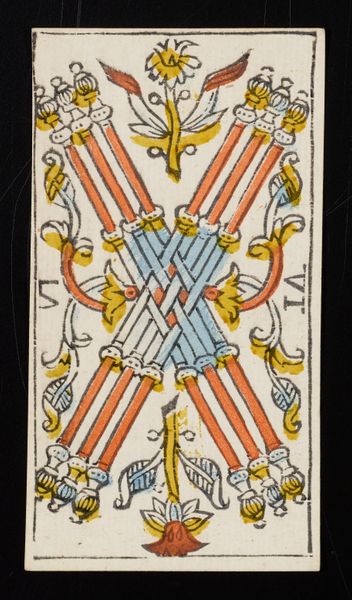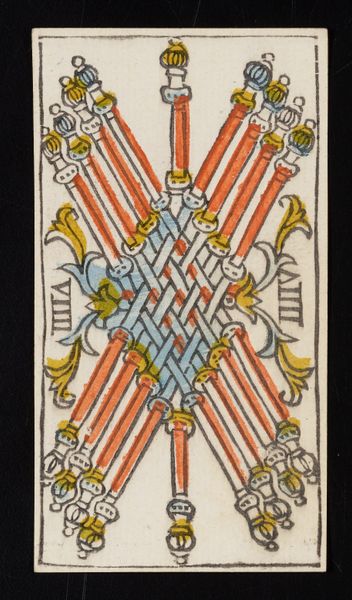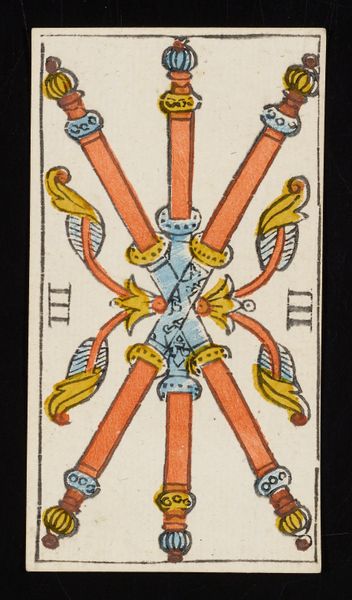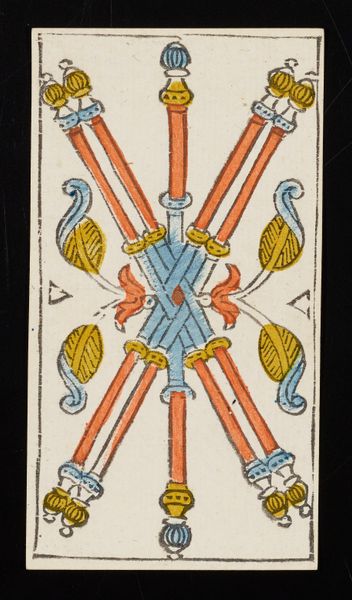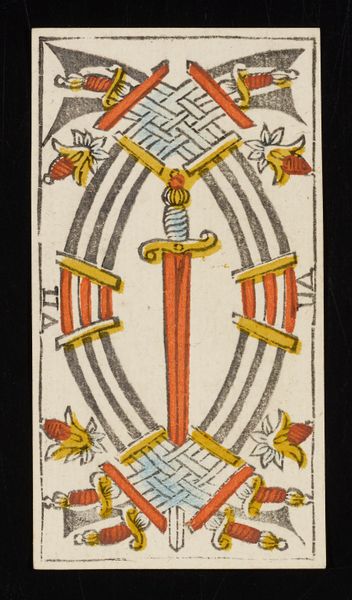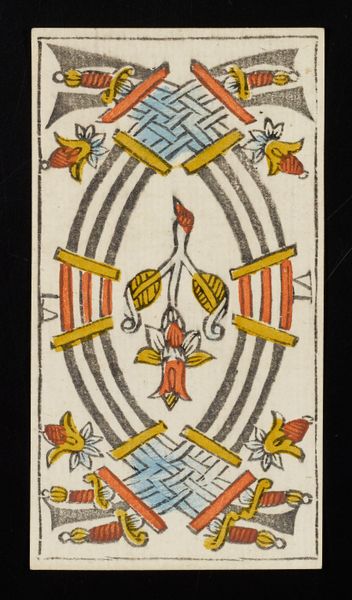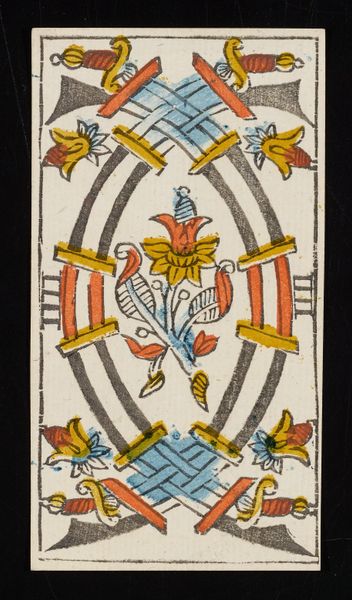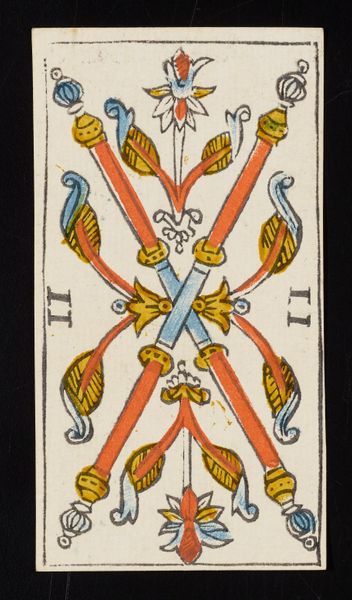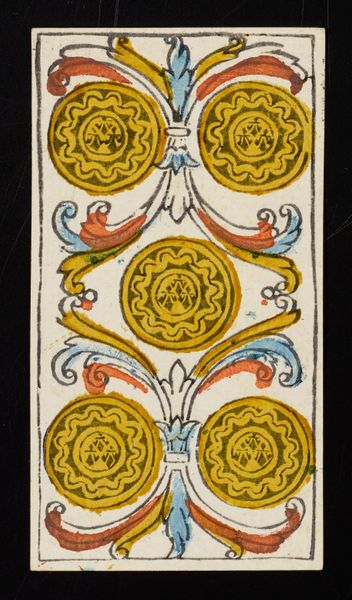
#
colouring book
#
neat line work
# print
#
personal sketchbook
#
linocut print
#
thin linework
#
pen work
#
sketchbook drawing
#
pattern repetition
#
coloring book page
#
doodle art
Dimensions: 4 7/16 x 2 7/16 in. (11.27 x 6.19 cm) (image, sheet)4 5/8 x 2 1/2 in. (11.75 x 6.35 cm) (sheet, each)
Copyright: Public Domain
This is the Seven of Batons card, made by Claude Burdel in the 18th century. Burdel was a Swiss cardmaker working in Turin, Italy, at a time when the production and interpretation of tarot cards were becoming increasingly popular across Europe. At first glance, these cards appear to be simple tools for entertainment or divination. However, their symbolism offers insights into the social and cultural values of the period. The batons themselves, arranged in a complex, interwoven design, might represent power, conflict, or perhaps the intersection of different paths. The number seven has its own significance, often associated with introspection, challenges, and spiritual growth. Consider the historical context of 18th-century Europe, a time of enlightenment, revolution, and shifting social hierarchies. What narratives are embedded within these cards? Do they reflect the era's fascination with mysticism and the occult, or perhaps hint at the tensions simmering beneath the surface of society? Like any cultural artifact, the tarot invites us to consider not only what it is, but also what it represents and the human desires and fears it embodies.
Comments
No comments
Be the first to comment and join the conversation on the ultimate creative platform.

